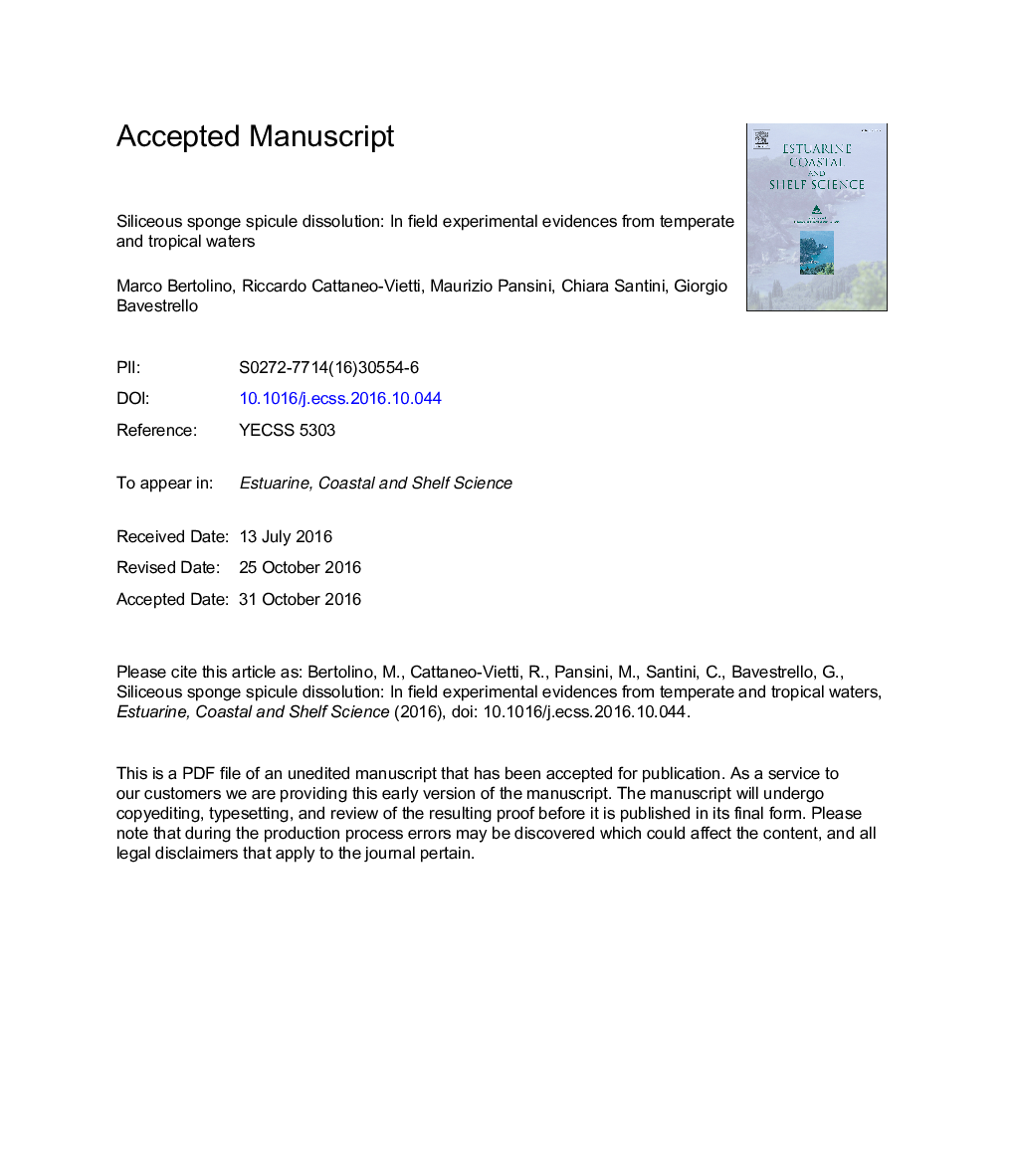| Article ID | Journal | Published Year | Pages | File Type |
|---|---|---|---|---|
| 6384377 | Estuarine, Coastal and Shelf Science | 2017 | 21 Pages |
Abstract
Sponge siliceous spicules are considered a sink in the silica balance of the oceans as their dissolution rate seems to be negligible, but no field data are available about this process. The aim of this study was a first evaluation of the quantitative dissolution rates of some demosponge and hexactinellid spicules (collected in different localities at different latitudes), left at sea for six months in two localities characterised by different water average temperatures: Mediterranean Sea and Celebes Sea. The effects of silica dissolution on the experimented spicules, studied by SEM analysis, produced an enlargement of the axial canal sometimes resulting in empty spicules. While in demosponges the axial canal wall of eroded spicules was perfectly smooth or slightly rough, the hexactinellid Rossella racovitzae showed a cavernous, well recognisable pattern of dissolution. The dissolution rates were determined evaluating the decrease in outer diameter and in the expansion of the axial channel of about 300 spicules for each considered species and locality. The spicules from the Mediterranean Geodia cydonium did not show any detectable dissolution in both localities, while those from Tethya citrina showed a loose of silica of about 23% in the Mediterranean and 47% in the Celebes Sea. Paratetilla bacca from the Red Sea decreased the silica content of about 30% in both the localities. Tetilla leptoderma from Mar del Plata lost about 8% and 42% of silica respectively in Mediterranean and Celebes Sea. Finally, the hexactinellid spicules from the Antarctic Rossella racovitzae showed highest dissolution rates in both experimental sites (37% and 66% in the Mediterranean and Celebes Sea, respectively). The different levels of dissolution can be related to the different taxonomic position in terms of specular structures as well as to the temperatures at which the spicules have been deposited and exposed. In fact, spicules from the same species showed a dissolution rate generally higher in tropical waters than in Mediterranean.
Keywords
Related Topics
Physical Sciences and Engineering
Earth and Planetary Sciences
Geology
Authors
Marco Bertolino, Riccardo Cattaneo-Vietti, Maurizio Pansini, Chiara Santini, Giorgio Bavestrello,
